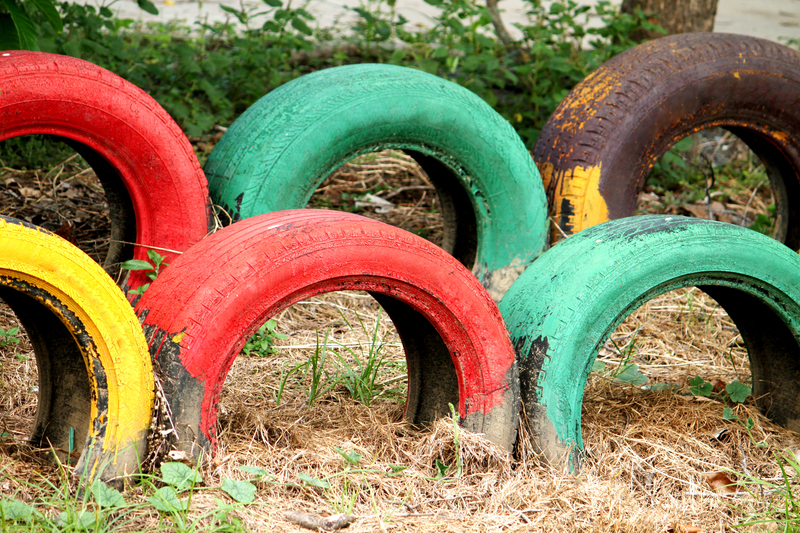Guidelines for Safe and Eco-Friendly Disposal of PPE
During recent years, personal protective equipment (PPE) has become crucial for public health and workplace safety. However, improper PPE disposal has led to environmental pollution, harming both wildlife and ecosystems. In this article, we'll provide comprehensive guidelines for safe and eco-friendly disposal of PPE, outlining best practices for individuals, healthcare facilities, and businesses to minimize environmental impact and ensure community health.

Understanding PPE and Its Environmental Impact
What is PPE?
PPE, or Personal Protective Equipment, refers to protective clothing or equipment designed to shield individuals from biological, chemical, or physical hazards. Common examples include:
- Face masks (surgical, N95, cloth)
- Gloves (latex, nitrile, vinyl)
- Face shields and goggles
- Isolation gowns and coveralls
- Shoe covers and caps
The Environmental Challenge of Disposing PPE
The surge in PPE use--especially single-use items--has escalated waste generation worldwide. Improper disposal of PPE clogs landfills, pollutes oceans, and endangers flora and fauna. Plastics from masks and gloves can take hundreds of years to break down, leaching chemicals and microplastics into our environment.
Eco-friendly PPE disposal isn't just about keeping our streets clean--it's about safeguarding our planet for future generations. With growing awareness, it's vital to adopt methods that emphasize both public health and environmental stewardship.
Why Safe and Eco-Conscious PPE Disposal Is Critical
- Prevents the spread of disease: Used PPE can harbor infectious agents.
- Protects wildlife and ecosystems: Animals often mistake PPE for food, leading to ingestion and entanglement.
- Reduces plastic pollution: Safe disposal curbs the influx of non-biodegradable materials into the environment.
- Promotes public cleanliness and aesthetics: Cities and parks stay cleaner and more enjoyable for all.
Step-by-Step Guidelines for Proper PPE Disposal
1. Separation at Source
Always separate PPE waste from general recyclables and compostables. Used PPE should never be mixed with regular trash or recyclable materials due to the risk of contamination and difficulty of processing.
- Designate clearly marked bins for PPE waste at home, work, and in public spaces.
- Opt for lined bins with lids to minimize exposure.
- Educate coworkers and family on correct disposal procedures.
2. Handling Used PPE Properly
Before disposal, always handle used PPE with care:
- Remove PPE gently to avoid contact with external surfaces.
- If possible, disinfect PPE items (especially reusable ones) before discarding, following local guidelines.
- Wash or sanitize hands thoroughly after removing PPE.
3. Safe Bagging Methods
For single-use PPE like masks and gloves, place them into a small plastic bag before disposing. Double-bagging is recommended for visibly soiled or potentially infectious items to reduce risk of exposure.
- Tie bags securely before placing them in dedicated PPE bins.
- Ensure children and pets cannot access PPE waste.
4. Correct Disposal as Per Local Regulations
Local waste authorities often issue specific guidelines on how to dispose of PPE. Always check your municipality's website for:
- Drop-off locations for large quantities or institutional PPE waste.
- Special collection days for hazardous or biomedical waste.
- Rules regarding recyclable or compostable PPE, if available.
5. Recycling and Eco-Friendly Approaches
Although traditional PPE items like single-use masks and gloves usually can't be recycled with household waste, new recycling initiatives are emerging:
- Specialized PPE recycling programs: Some companies collect and process PPE, converting them into building materials or fuel.
- Reusable PPE: Whenever possible, opt for washable cloth masks and gowns that can be sterilized and reused.
- Biodegradable PPE: New eco-friendly PPE options are made from plant-based or compostable materials. Support these innovations!
Visit your local government website for updates on recyclable PPE and collection points.
6. Do Not Litter!
Even with the best intentions, one of the worst practices is to discard PPE outdoors, such as on sidewalks or parks. Littered PPE contributes to pollution and poses health risks.
PPE Disposal Guidelines for Different Settings
Households
- Designate a PPE bin in high-traffic areas like entryways.
- Use disposable gloves and masks only when necessary.
- Transition to reusable PPE where feasible.
- Double-bag PPE waste if someone is sick at home.
- Keep PPE waste away from children and pets.
Healthcare Facilities
- PPE waste should go in color-coded, leak-proof bags as per biohazard protocols.
- Trained personnel must use gloves and appropriate PPE when handling waste.
- Transport bags to designated biomedical waste areas daily.
- Never leave PPE waste unattended in public or unauthorized locations.
Workplaces and Public Spaces
- Install clear signage and PPE-dedicated waste bins.
- Provide staff with regular training on safe PPE disposal.
- Promote the use of eco-friendly and reusable PPE wherever possible.
- Conduct regular audits to ensure compliance.
Innovations in Sustainable PPE Disposal
Recycling Initiatives
Companies like TerraCycle are leading the way by accepting used PPE for recycling. Items are collected in special boxes and sent to facilities where they are processed into raw materials for new products.
- Contact local recycling organizations about PPE collection programs.
- Advocate for workplace or community partnerships with such organizations.
Compostable PPE
Innovations in biodegradable PPE use plant-based polymers, making items like masks and gloves suitable for composting--provided they are not heavily contaminated.
- Read packaging to confirm compostability certifications.
- Compost biodegradable PPE only if it is free from infectious contaminants.
Waste-to-Energy Conversion
Incineration of non-recyclable PPE in waste-to-energy plants is another eco-friendly disposal solution, as it minimizes landfill impact and generates electricity.
- Ensure incineration is performed at certified facilities with proper emissions controls.
Risks and Challenges of Improper PPE Waste Disposal
- Microplastic pollution: Synthetic masks and gloves degrade into microplastics, threatening marine life and contaminating food chains.
- Infectious disease spread: Improperly discarded PPE exposes sanitation workers and the public to pathogens.
- Urban flooding: Clogged drains due to PPE waste can lead to flooding in cities.
- Wildlife entanglement: Animals may ingest or become trapped in discarded PPE, causing injury or death.
Best Practices for Eco-Conscious PPE Use
Prioritize Reusable PPE
- Choose cloth masks and washable gowns where appropriate.
- Follow manufacturer and health authority cleaning guidelines before reuse.
Source Sustainable Products
- Look for eco-friendly products made from organic cotton, bamboo, or other biodegradable materials.
- Support companies investing in sustainable manufacturing and recycling programs.
Avoid Overuse
- Use PPE only as necessary, minimizing waste without compromising safety.
- Encourage staff and family to follow public health guidance for proper PPE usage.
Community and Global Initiatives for PPE Waste Reduction
Governments, NGOs, and businesses worldwide are developing programs to address the environmental consequences of PPE disposal. Key initiatives include:
- Public awareness campaigns teaching citizens how to safely and responsibly dispose of PPE.
- Funding for biodegradable PPE research and manufacturing.
- Expansion of PPE-specific recycling infrastructure.
Frequently Asked Questions (FAQ)
Can I recycle PPE at home?
Most curbside recycling programs do not accept PPE items like masks and gloves because they can contaminate recycling streams. Check with your local waste authority for designated drop-off points or special collections for PPE recycling.
Are cloth masks better for the environment?
Yes, cloth masks are reusable and reduce single-use plastic waste. They must be washed regularly for safety but offer a more sustainable alternative for non-medical settings.
What should I do if I find discarded PPE outdoors?
If you feel safe handling it, use disposable gloves to collect the PPE, double-bag it, and place it in a dedicated waste bin. Sanitize your hands immediately afterward.

Conclusion: Your Role in Safe and Responsible PPE Disposal
Guidelines for safe and eco-friendly disposal of PPE are essential to reducing health hazards and lessening the ecological footprint of protective equipment. Whether at home, at work, or within the community, each of us has a responsibility to dispose of PPE with care. Separate PPE waste, follow local regulations, explore recycling initiatives, and opt for reusable or biodegradable alternatives where possible.
By adopting these practices and spreading awareness, we can collectively create a safer, cleaner, and healthier planet. Let's all do our part in the responsible management of PPE waste--protecting ourselves and our environment for today and tomorrow.
Further Reading & Resources
- WHO Guidelines on PPE Waste Management
- US EPA Guidance on PPE Disposal
- United Nations Environmental Program Report
Together, let's ensure that PPE use is safe for humans--and the Earth!
